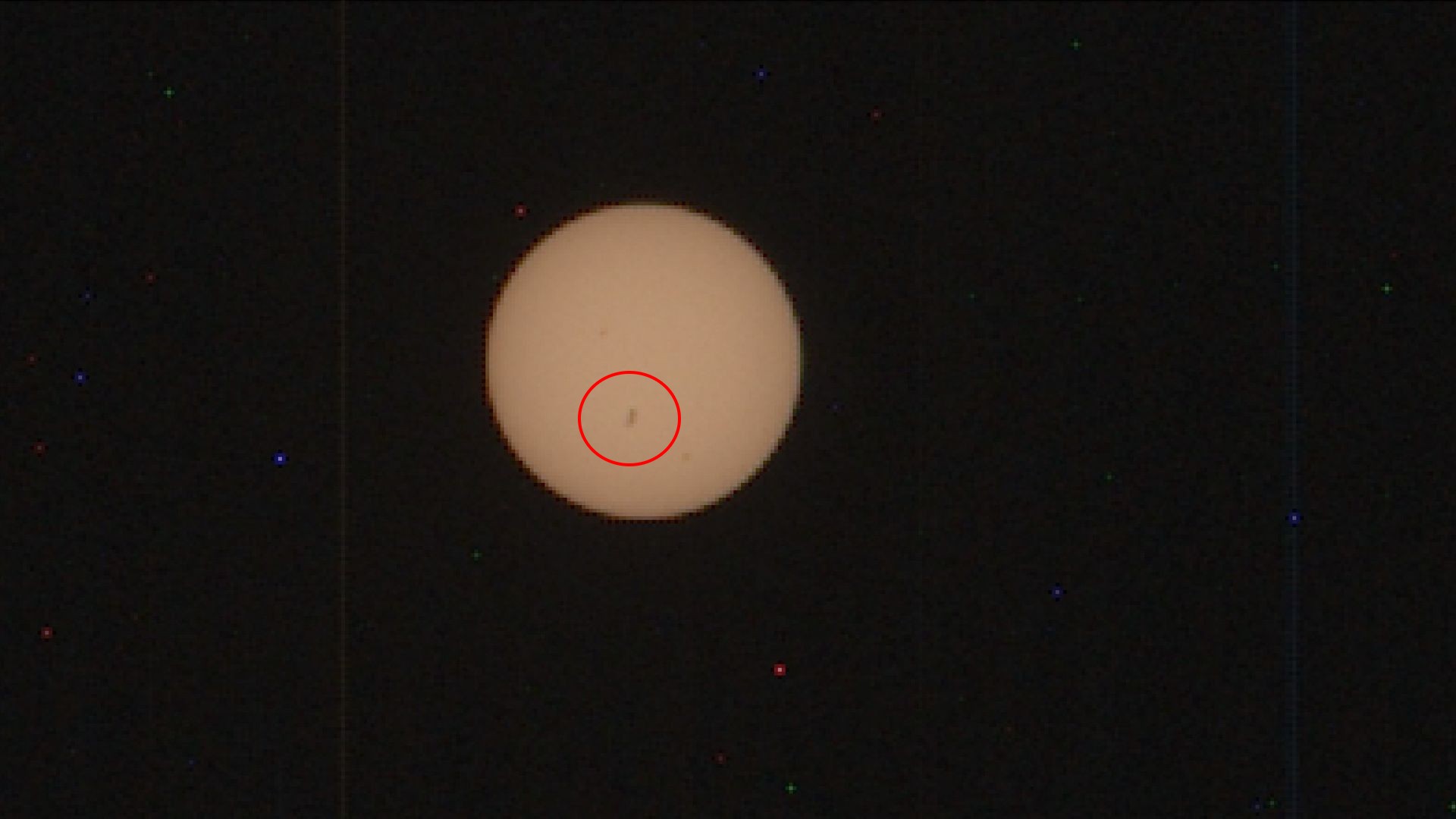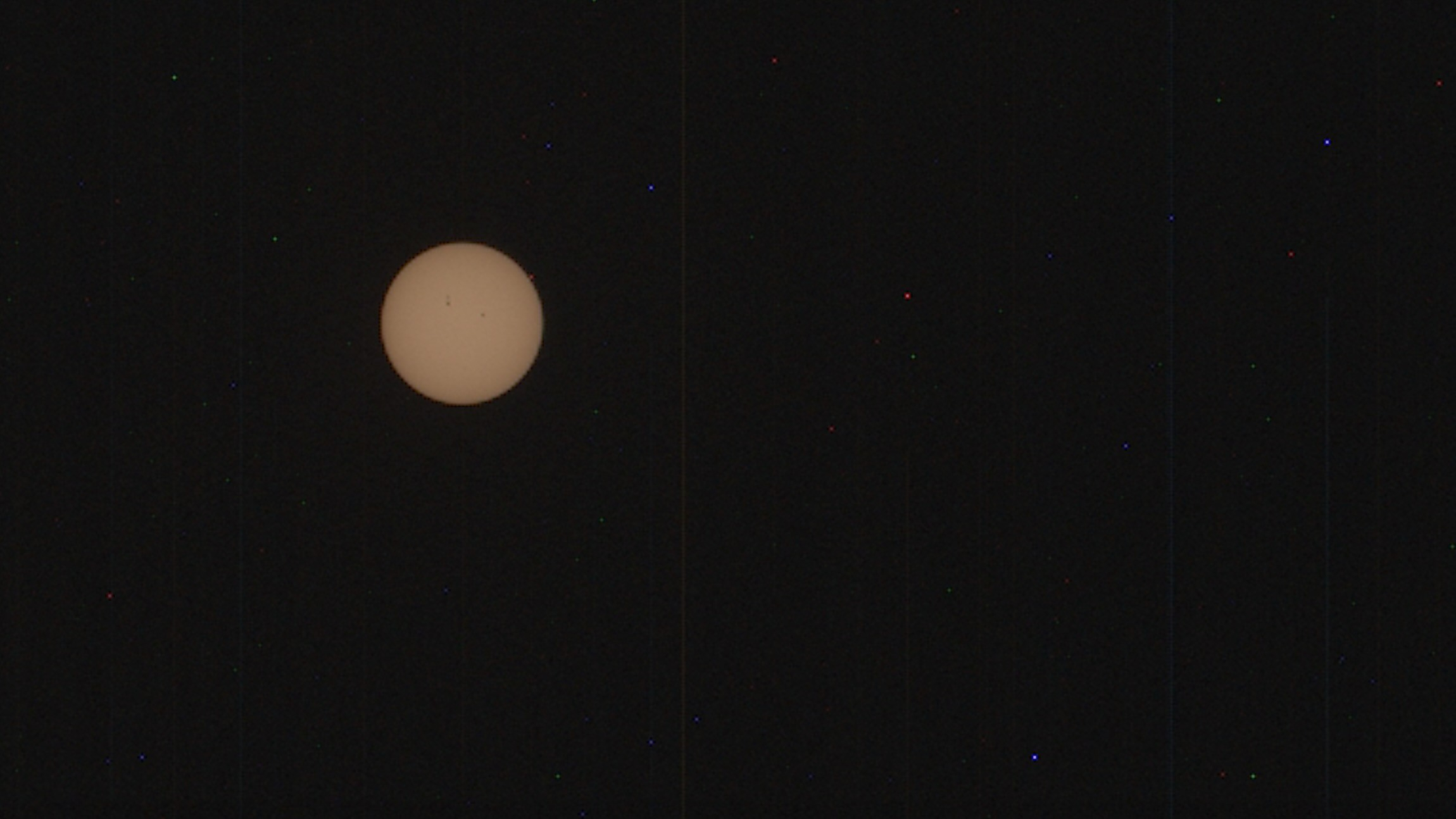
NASA's Perseverance Mars rover has given us a sneak peek of an intriguing patch of the sun that's not yet visible from Earth.
Perseverance photographs the sun daily with its Mastcam-Z camera system to gauge the amount of dust in the Martian atmosphere. Such an effort captured a big sunspot moving across the solar disk late last week and over the weekend, as SpaceWeather.com reported.
"Because Mars is orbiting over the far side of the sun, Perseverance can see approaching sunspots more than a week before we do," SpaceWeather.com wrote in a post highlighting the sunspot photos. "Consider this your one-week warning: A big sunspot is coming."
Related: Perseverance rover captures gorgeous video of solar eclipse on Mars

Sunspots are relatively dark and cool areas where the sun's magnetic field is particularly strong.
These patches commonly serve as launch pads for solar flares (outbursts of high-energy radiation) and coronal mass ejections (CMEs; huge eruptions of solar plasma), which is why they're also known as "active regions."
Solar flares and CMEs that hit Earth can affect satellite navigation and disrupt power grids, among other things, so tracking the movement of sunspots is more than just of academic interest.
Get the Space.com Newsletter
Breaking space news, the latest updates on rocket launches, skywatching events and more!
Sungazing is a sidelight for Perseverance, of course. The rover's main tasks are hunting for evidence of life on Mars and collecting dozens of samples, which will be returned to Earth sometime in the next decade by a joint NASA-European Space Agency mission campaign (provided funding for the endeavor comes through).
Perseverance is exploring the floor of Mars' Jezero Crater, which hosted a big lake and a river delta billions of years ago. The car-sized rover landed inside the 28-mile-wide (45 kilometers) crater in February 2021 along with the tiny Ingenuity helicopter.
Ingenuity was designed as a technology demonstrator, but has surpassed expectations to become something much more. It's now serving as a scout for the Perseverance team and has a whopping 55 Red Planet flights under its belt.
Join our Space Forums to keep talking space on the latest missions, night sky and more! And if you have a news tip, correction or comment, let us know at: community@space.com.

Michael Wall is a Senior Space Writer with Space.com and joined the team in 2010. He primarily covers exoplanets, spaceflight and military space, but has been known to dabble in the space art beat. His book about the search for alien life, "Out There," was published on Nov. 13, 2018. Before becoming a science writer, Michael worked as a herpetologist and wildlife biologist. He has a Ph.D. in evolutionary biology from the University of Sydney, Australia, a bachelor's degree from the University of Arizona, and a graduate certificate in science writing from the University of California, Santa Cruz. To find out what his latest project is, you can follow Michael on Twitter.









